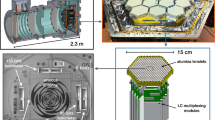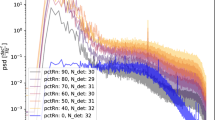Abstract
The Next-Generation Balloon-borne Large-Aperture Submillimeter Telescope (BLAST-TNG) is a submillimeter imaging polarimeter which will map the polarized thermal emission from interstellar dust, revealing magnetic field structures in nearby giant molecular clouds, external galaxies and the diffuse interstellar medium in three bands centered at 250, 350 and 500-μm (spatial resolution of 30″, 41″ and 59″). Its camera contains over 2500 dual-polarization sensitive lumped element kinetic inductance detectors, which are read out using field-programmable gate array-based readout electronics. BLAST-TNG was scheduled for a 28-day Antarctic flight during the 2018/2019 summer season, but unfavorable weather conditions pushed the anticipated flight to 2019/2020. We present a summary of key results from the 2018/2019 preflight characterization of the detector and receiver. Included in this summary are detector yields, estimates of in-flight sensitivity, a measurement of the optical passbands and estimates of polarization efficiency.



Similar content being viewed by others
Notes
The provided yield value for the 350-μm array has been decreased to account for resonators which fell outside of the 512 MHz readout bandwidth.
Data for the 250V and 500-μm arrays were not available due to excess noise during these tests. The achromatic half-wave plate (AHWP) was not installed in the receiver when these measurements were taken. Additional measurements will be required to estimate its contribution to the cross-polarization.
References
N. Galitzki et al., J. Astron. Instrum. 3, 2 (2014). https://doi.org/10.1142/S2251171714400017
S. Gordon et al., J. Astron. Instrum. 5, 4 (2016). https://doi.org/10.1142/S2251171716410038
S. Gordon, Diss. Arizona State University (2019)
N. Lourie, et al., Proceedings of SPIE 10700, Ground-based and Airborne Telescopes VII, 1070022 (2018). https://doi.org/10.1117/12.2314380
N. Lourie, et al., Proceedings of SPIE 10708, Millimeter, Submillimeter, and Far-Infrared Detectors and Instrumentation for Astronomy IX, 107080L (2018). https://doi.org/10.1117/12.2314396
P.D. Mauskopf, Publ. Astron. Soc. Pacific 130(990), 082001 (2018)
Acknowledgements
This work was funded in part by a NASA Earth and Space Science Fellowship (NNX16AO91H). We also acknowledge the support from the NASA BLAST research Grants (NNX13AE50G, NNX14AN63H and 80NSSC18K0481).
Author information
Authors and Affiliations
Corresponding author
Additional information
Publisher's Note
Springer Nature remains neutral with regard to jurisdictional claims in published maps and institutional affiliations.
Rights and permissions
About this article
Cite this article
Gordon, S., Sinclair, A., Mauskopf, P. et al. Preflight Detector Characterization of BLAST-TNG. J Low Temp Phys 200, 400–406 (2020). https://doi.org/10.1007/s10909-020-02459-6
Received:
Accepted:
Published:
Issue Date:
DOI: https://doi.org/10.1007/s10909-020-02459-6




